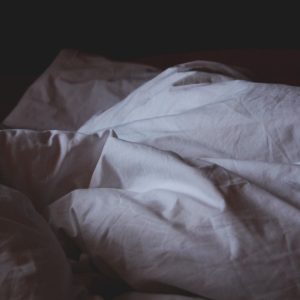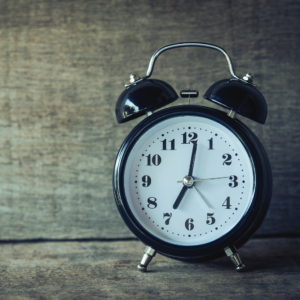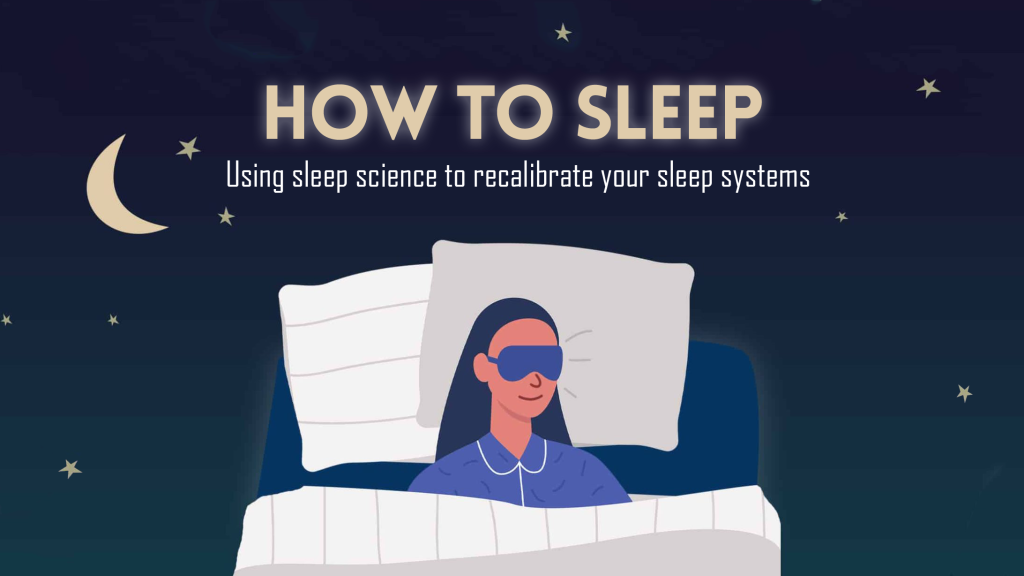This guide is intended for those who want to learn and practice good sleep habits, those who don’t have insomnia, or those who have insomnia but are not ready to go through the how to fix insomnia guide in earnest. I wanted to put together a page of behavioral sleep guidance that was based on the foundation of CBT-I principles, as well as concise and practical.
Level One: Optimize Your “Sleep Hygiene”
It’s a funny term if you haven’t heard it before, but sleep hygiene just refers to behaviors and routines that promote healthy sleep. The following are generally recognized to be the most important elements of good sleep hygiene. Figure out if there are ways you can optimize your sleep by addressing/improving some of these behaviors.
- Create a comfortable sleep environment – including mattress comfort, temperature, minimizing noise and light exposure, etc.
- Unplug from your electronic devices (especially the ones that emit sleep-disrupting blue light) at least 30-60 minutes before bed and don’t take them into bed with you.
- Refrain from doing anything in bed other than sleeping or being sleepy, including watching TV, reading, using smartphone / tablet / laptop, etc. (Physical intimacy is an exception)
- Establish a consistent bedtime routine 30-60 minutes before bed that helps you relax and wind-down from the day.
- Exercise regularly, but not too close to bedtime (within 3 hours before bedtime).
- Reduce the use of alcohol, caffeine, and nicotine, especially close to bedtime. General rule of thumb: avoid alcohol after dinner, caffeine after mid-afternoon, and nicotine 2-3 hours before bed.
- Food and drink: Don’t go to bed too hungry or too full. A light snack can be helpful. Reduce your liquid intake in the evenings if you’re waking up to use the restroom.
Level Two: Optimize Your Sleep Schedule
Once you have your sleep hygiene in order, you’re ready to move your focus to your sleep schedule, which I consider highly important. If your sleep patterns are disrupted and/or irregular, you need to “re-train” your body to fall back into a consistent pattern of sleep. Even if your sleep is not disrupted, optimizing your sleep pattern and circadian rhythm can improve the quality of your sleep.
- If there’s a significant mismatch of hours you spend in bed to the hours of sleep you actually get (example: in bed for about 8 hours but only get about 6 hours of sleep), then you’re spending too much time in bed. Reduce the amount of time you spend in bed. Try picking a bedtime that’s later, a time that you’re likely to feel sleepy by most nights.
- If, however, you fall asleep quickly and stay asleep, but you still feel non-rested and tired, you may not be scheduling adequate sleep opportunity. Try slowly expanding the scheduled time in bed. If that still doesn’t work, see if you have signs that point to another type of sleep disorder.
- Stick to a (relatively) consistent sleep schedule. Try not to sleep in on weekends – if you must, try keeping the “sleeping in” to 1 hour or less.
- Naps are fine, as long as it doesn’t disrupt night-time sleep. Limit naps to 20 or 30 minutes and no later than mid-afternoon, so as to minimize night-time effects.
- Minimize light exposure in the evenings, and maximize light exposure in the mornings, so as to reinforce a consistent and healthy circadian rhythm.
Level Three: Practice Physical and Mental Relaxation
In this final level, you’re going to build in habits and practices that help you to get to a state of mental and physical relaxation. You should have already adopted a ‘wind-down’ routine based on the sleep hygiene section, but in this section we want to go further. This is important because you can’t really fall asleep by “trying harder” – falling asleep usually requires you to be in a physical and mental state of relaxation. You need skills and habits that get you here on a regular basis. This isn’t something you will acquire overnight, but if you practice these skills consistently, it will absolutely make a difference in not only your sleep but also your stress and anxiety management.
- Learn different ways to tap into the relaxation response, then choose and practice a few methods that work best for you. The relaxation response is characterized by lowered: heart rate, blood pressure, and stress hormone levels. Different techniques include: progressive muscle relaxation, controlled breathing, guided imagery, yoga, meditation, and biofeedback.
- Schedule “worry time” before bed. Or it could be “to-do list time”, or “problem solving time” (or even “arguing time”). The point is, you need to preemptively address whatever sleep-disrupting mental habits have formed that start when you get into bed. Writing can be particularly useful (eg. journaling, making to-do lists, keeping anxiety logs). Make sure you schedule this plenty of time before getting into bed (1-2 hours). And if/when these thoughts visit your mind when you get into bed, non-judgmentally dismiss them or let them float by, reminding yourself that it’s already on paper and will be there the next morning.
- Experiment. There are many more ways that you can modify your bedtime routine to help you relax and sleep better. What works for one person may not work for you, so the best way to learn is to experiment. Remember, behaviors can be helpful to sleep or harmful to sleep, and your goal is to optimize these behaviors to improve your sleep.




